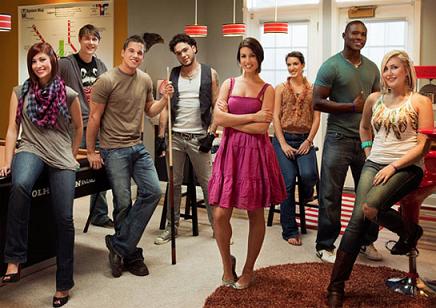
I’m not big on the real world. But The Real World–well, that’s a different story. I don’t have cable. I don’t even have a TV. It is therefore impossible to use innocent channel-surfing as an excuse to pause on a program of eight strangers living in a mansion having their lives taped. No. The steps I take to satisfy my addiction are numerous. I turn on my computer. I type in MTV.com and press enter. I click on The Real World, I click on the next episode, I wait for it to load. Occasionally, when the wireless signal in my apartment wanes, I extract myself from the comfort and comforters of my bed, go into the hallway, unplug the router, count to ten like Netgear told me, and plug the router back in. Cancun, D.C., Brooklyn. I satisfy my addiction come hell or no signal. And I’m starting to have an idea why.

The Real World is like the real world in that its participants are 20-somethings often seen in their pajamas during midday, lounging around, starting fights with each other, having sex with each other, and, in the increments between these diversions, occasionally wondering what they hell they should be doing with their lives on a larger scale. The Real World is like the real world in that there is little to no guidance or instruction. They aren’t marooned on an island with bankers and yoga instructors, taking part in a series of orchestrated survival challenges–constructing hovels, eating bugs–after which they are assessed and evaluated. If the participants in The Real World do something with their time in a new city, they do something. If they don’t, they don’t. The producers don’t seem to care either way, so long as the eight strangers get sufficiently drunk or depressed, manic or hysterical to conjure footage that could be spliced into a good show. And after the season has been shot, the producers, with the privilege of knowing how things started and how things ended, pull out the themes which then shape the stories of the episodes and the larger stories of the season–this misanthrope who’d never had a girlfriend, found love; that right-wing born-again found a best friend in a gay guy; this dancer shifts her interest toward social activism. The Real World isn’t the real world because the stories have been extracted from raw footage, while in the real world, it is up to the artist to do this.
The Real World is not, in any sense, high art. However, The Real World does demonstrate a certain process that can at times lead to high art. Every writer, artist, filmmaker, musician, etc. lived in the real world. They went about their lives, getting drunk and depressed and manic and hysterical in private. They observed the world on their own, without instruction, and tried to figure out how they fit into it. Their lives accrued the raw material from which they found images, ideas, sounds and language. From this accrued experience, they shaped themes. From these themes, they wrote stories, composed sonatas, painted paintings. From the messy, boring, unscripted raw material of life, they spliced something together that, even though it was artifice, expressed something more true about the real world than the real world could tell about itself.
The Real World is interesting from a writer’s perspective, as it seems to recreate a stage of the creative process when he/she reads over fragments scrawled on napkins and starts arranging them in elaborate messy structures and slack story lines, attempting to organize them, attempting splice together these vestiges human experience into some kind of more perfect and taut story line about human experience. The Real World is far from perfect; the real world is far from perfect. Luckily, sometimes tension accrues that can’t be cut with a serrated knife, and that seems to, somehow, keep us going.




{ 0 comments… add one now }